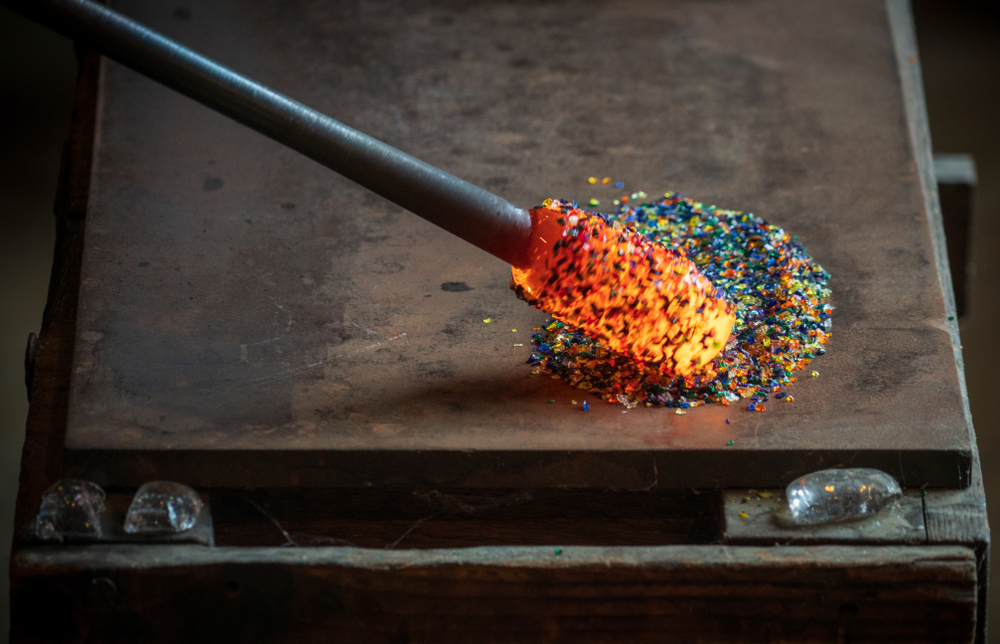Glass is omnipresent in our daily lives. Every time we look out the window, stare into our phone, pour a glass of wine, set the wine on our glass coffee table, and watch our polarized glass television screen, we’re utilizing one of the oldest and most important commodities. The following is a compressed history of glass manufacturing worldwide and the early developments of glass factories in the United States.

A Glass from the Past:
Before ancient humans figured out how to forge glass, the Earth itself had been creating it for billions of years. Naturally occurring volcanic glass had been used in societies around the world for tools and trading materials. The first man-made glass vessels and trinkets are believed to have originated in Mesopotamia, however archeologists have traced the explosion of glassmaking technology to Western Asia and Egypt. The technique of “core forming” was developed around 1500BC and allowed for a diversity of shapes in glass vessels and jewelry items. While this was a watershed breakthrough in glass manufacturing, only the wealthiest citizens could afford the luxury metal. It wasn’t until over a thousand years later when the Syrians invented glass-blowing tubes that glassware was affordable to the masses. Glass making technique eventually found its way to Germany and France by way of the glass-blowing workshops popularized by the Roman Empire.

The Eight Dutchmen:
The early settlements of what would become the United States were home to eight Germans Poles known as “The Dutchmen.” In 1608, they used local material to make the first glass called “trial glass” and exported it to England. Their products primarily consisted of window panes, glass bottles, vials, and cups. The glass factory erected in Jamestown by these Dutchman became the first manufactory built in the United States. The Jamestown Glasshouse was regularly attacked by Native American tribes, as it was situated near one of their encampments. After multiple sneak attacks on the factory, the Dutchmen decided to go to the Native American village of Werowocomoco to make an offer to build a house for the Powhatan chief. The chief was highly suspicious of their motives and banished them from the village. In the coming years, due to a sudden shortage of food, the population dropped dramatically and the Jamestown Glasshouse was abandoned in 1622.
By the mid-1700s the style of glassmaking was changed because of a law passed that ordered glass be taxed by weight. The new tax forced glassmakers to find creative ways to minimize the glass tax on their products. These novel stemmed wine glasses were popular among the well-to-do, as they were the only ones who could afford to buy them.

Conclusion:
Civilizations have been tinkering with glass-making technology for thousands of years. While it’s easy to take for granted the seemingly endless implications glass has had on society, we should perhaps be grateful that modern life affords us luxuries that our ancestors could only dream of. Remember that next time you look out the window or drink out of a fancy stemmed wine glass. If your window is too dirty to look out of, don’t hesitate to call Ernest Windows. We give glass the respect it deserves!
Leave a Reply